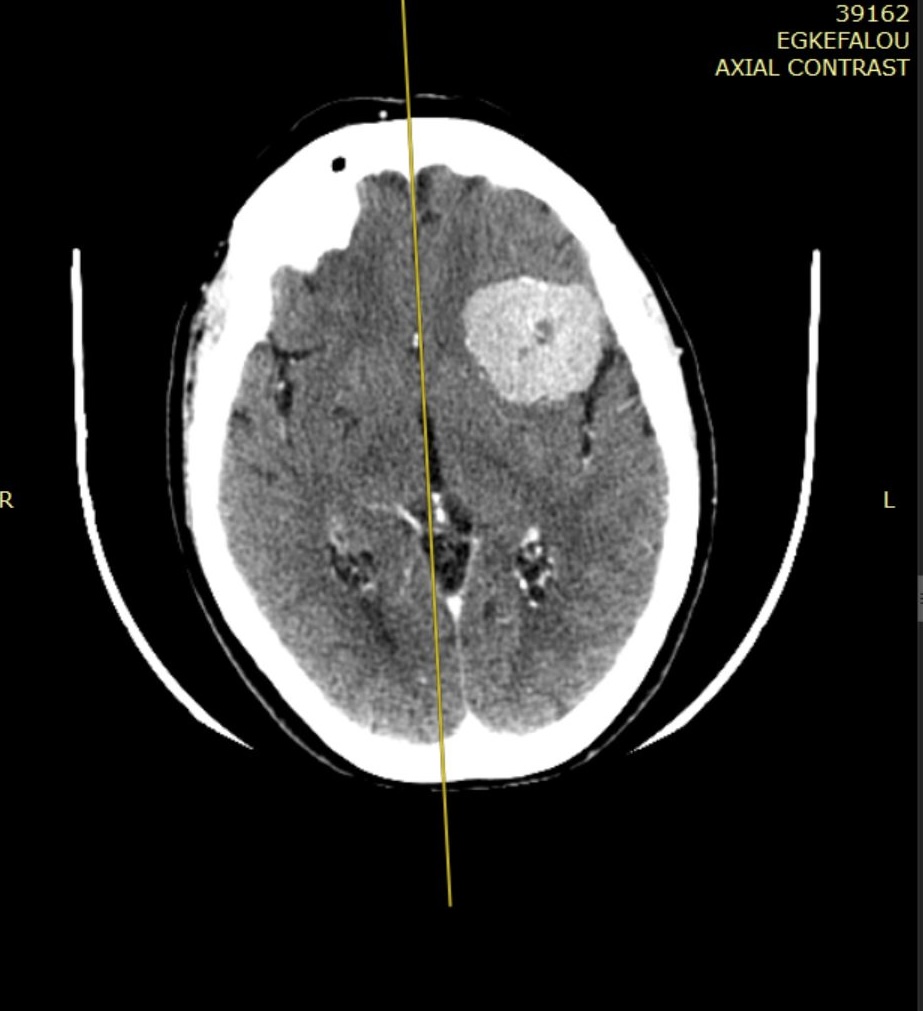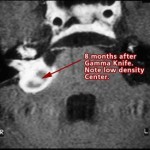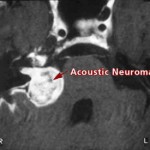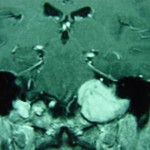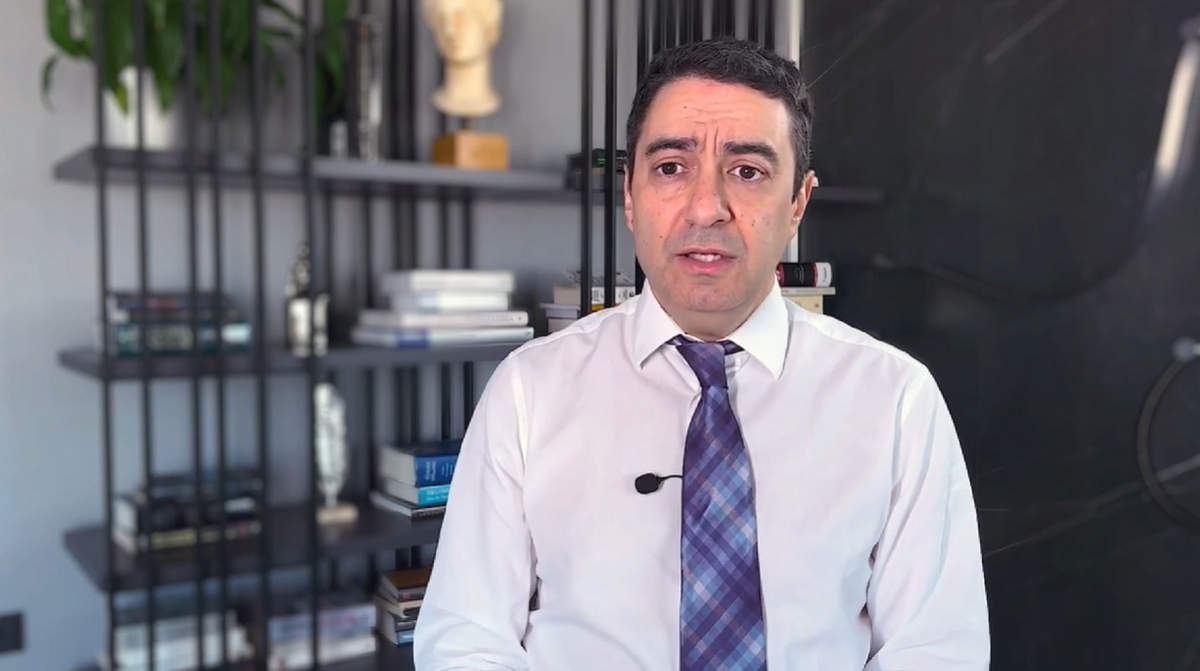Acoustic Neuromas
These are benign and slow-growing tumors that originate in the vestibular nerve, i.e. a part of the 8th cerebral nerve. They do not create metastases. They account for 6-8% of brain tumors. Tumor cells expand along the nerve, pressing on the rest of the brain nerves. They can even exert pressure on the brain stem.
Signs and Symptoms
Hearing loss on the side where the tumor is located. This can be slow and covert, and the patient may not notice it immediately. There may be dizziness, ringing in the ears and balance disorders. As these grow, they cause more symptoms, such as headache, facial asymmetry (paralysis of the facial nerve), numbness in half the face, and others.
What happens if they are not treated?
Permanent hearing loss or paralysis of half of the face may be caused. There may also be some pressure on the brain stem, where important centers are located, such as the control of respiration, of heart function and other centers. This can cause instability, difficulty in coordinating movements, and limb weakness.
Diagnosis
Diagnosis is made with laboratory and imaging tests, such as an audiogram to assess hearing damage, CT and MRI to determine the size and location of the tumor and its relationship to the anatomical structures of the brain, and electrophysiological examination.
Treatment
Simple monitoring in the case of small tumors, without symptoms, in elderly patients, in patients who do cannot accept treatment. In this case, MRI scans should be performed at regular intervals to monitor the size of the tumor.
Surgical treatment, in case where the complete removal achieves healing of the lesion and avoids future consequences and permanent damage to the brain and nerves.
Stereotactic Radiosurgery (γ-knife), for tumors up to 3 cm, or after the surgery, to treat any tumor remnants that was dangerous to remove. The tumor may not disappear with radiation, but it stops growing.
Meningiomas
A meningioma is a usually a benign tumor that grows slowly, located either in the brain or in the spinal cord. They account for 20% of brain tumors. They occur more frequently in women. They cause symptoms due to the pressure they exert.
Meningiomas do not come from the brain itself, but from the meninges, and specifically the arachnoid. The exact cause is unknown.
Symptoms
They depend on the location of where the tumor grows. Sometimes they are discovered by chance. Sometimes they cause increased intracranial pressure, i.e. headaches, vomiting, or they manifest with epileptic seizures or neurological symptoms such as vision disorders, limb weakness, balance disorders, aesthetics, loss of sense of smell, other such symptoms. When located in the spinal cord, they cause limb weakness (especially lower limbs, because they are more frequently located in the thoracic spine where the nerves that control the lower extremities originate), difficulty walking, muscle weakness, numbness, incontinence, and more.
Diagnosis
Diagnosis is almost always made via MRI with a contrast agent. The meningioma image is usually typical and it is possible to diagnose. Of course, a definitive diagnosis is made only after the biopsy.
Treatments
Conservative treatment
Simple follow-up when the findings are random, very small, in very elderly people, or people who do not refuse surgery. In this case, repeat MRI scans are required at regular intervals. The appearance of symptoms is not excluded.
Radiation therapy
There are various techniques, including conventional radiation therapy, stereotactic radiation therapy (γ-knife, cyber-knife). Stereotactic radiation therapy treats tumors up to 3 cm and aims to prevent the growth of the tumor, and sometimes even shrink it. It is sometimes used to treat a part of the tumor that could not be surgically removed due to its location or due to high surgical risk causing neurological side effects.
Surgical removal
This is the most effective treatment. The surgical risk depends on the location; however, it is usually possible to completely and relatively safely remove the tumor. After the operation, regular follow-up is required (initially every year, then less frequently), to exclude the possibility of recurrence.
Prognosis of meningiomas
Most are benign and can be cured with proper treatment. Very rarely, they can cause a metastasis to other organs. If they are malignant then they are more aggressive and have more frequent recurrence. In certain cases they can be multiple or part of syndromes that are associated with other tumors, such as neurofibromatosis.
Tumors of the pituitary gland
These tumors are located in an anatomical area at the base of the brain; they include many different types of tumors, the most common of which is pituitary adenoma (~ 10% of brain tumors). This is usually diagnosed by the hormonal or vision disorders it causes. They are benign, but often difficult to remove completely. They are related to, and cause diseases such as Cushing’s syndrome, amenorrhea, galactorrhea, sexual desire disorders, acromegaly, and others. Some of these syndromes (such as prolactinoma) can only be treated with medication with satisfactory results. Other tumors in the area are craniopharyngiomas, Rathke pouch cysts, meningiomas, etc.

